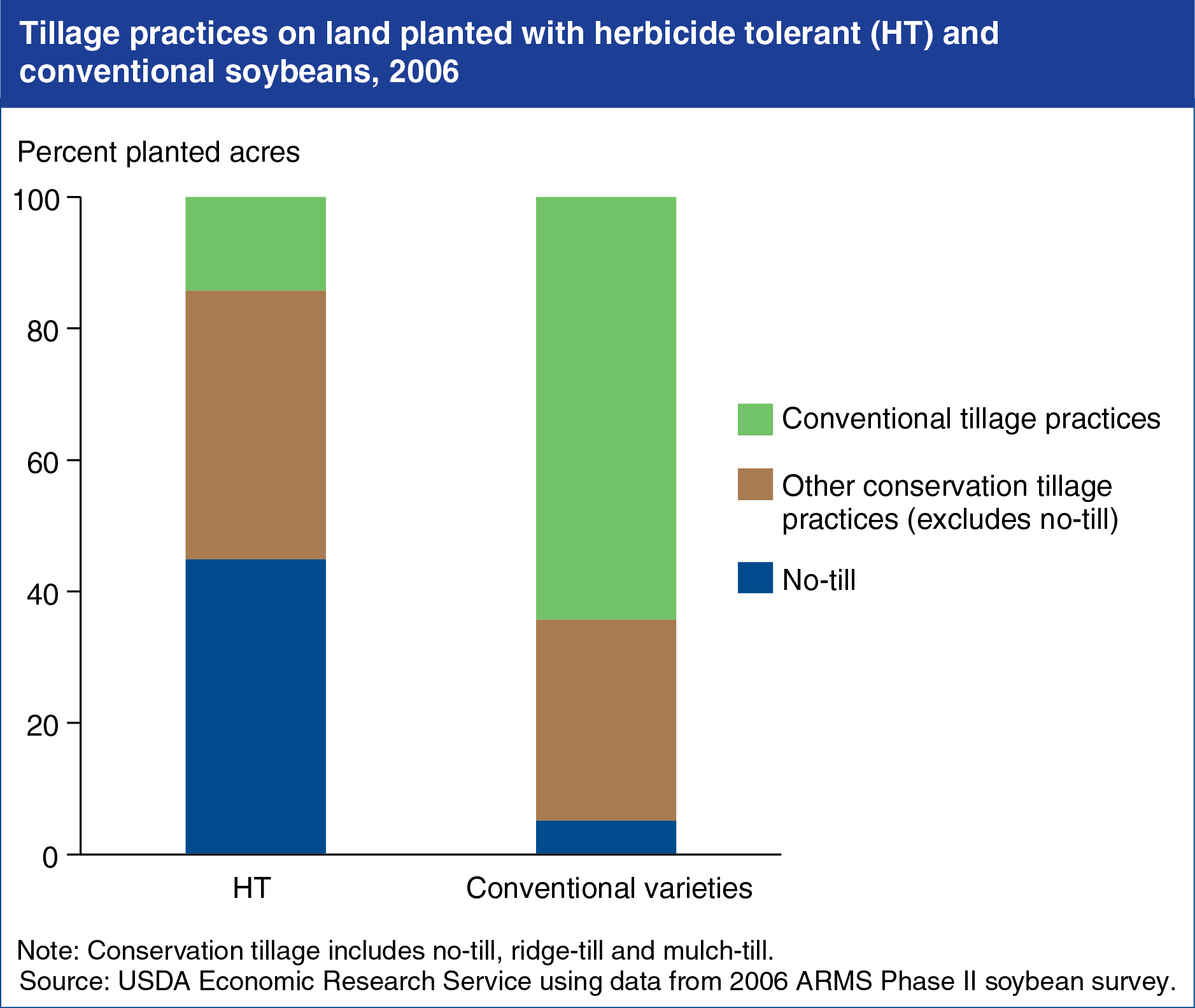Herbicide-tolerant (HT) soybean growers more likely to practice conservation tillage
- by Jorge Fernandez-Cornejo
- 7/9/2014

By leaving at least 30 percent of crop residue covering the soil surface after all tillage and planting operations, conservation tillage (including no-till, ridge-till, and mulch-till) reduces soil erosion, increases water retention, and reduces soil degradation and water/chemical runoff. Conservation tillage also reduces the carbon footprint of agriculture. By 2006, approximately 86 percent of land planted with herbicide tolerant (HT) soybeans was under conservation tillage, compared to only 36 percent of conventional soybean acres. Differences in the use of no-till were just as pronounced. While approximately 45 percent of HT soybean acres were cultivated using no-till technologies in 2006, only 5 percent of the acres planted with conventional seeds were cultivated using no-till techniques, which are often considered the most effective of all conservation tillage systems. Cotton and corn data exhibit similar, though less pronounced, patterns. This chart is found in “Adoption of Genetically Engineered Crops by U.S. Farmers Has Increased Steadily for Over 15 Years” in the March 2014 Amber Waves online magazine.

